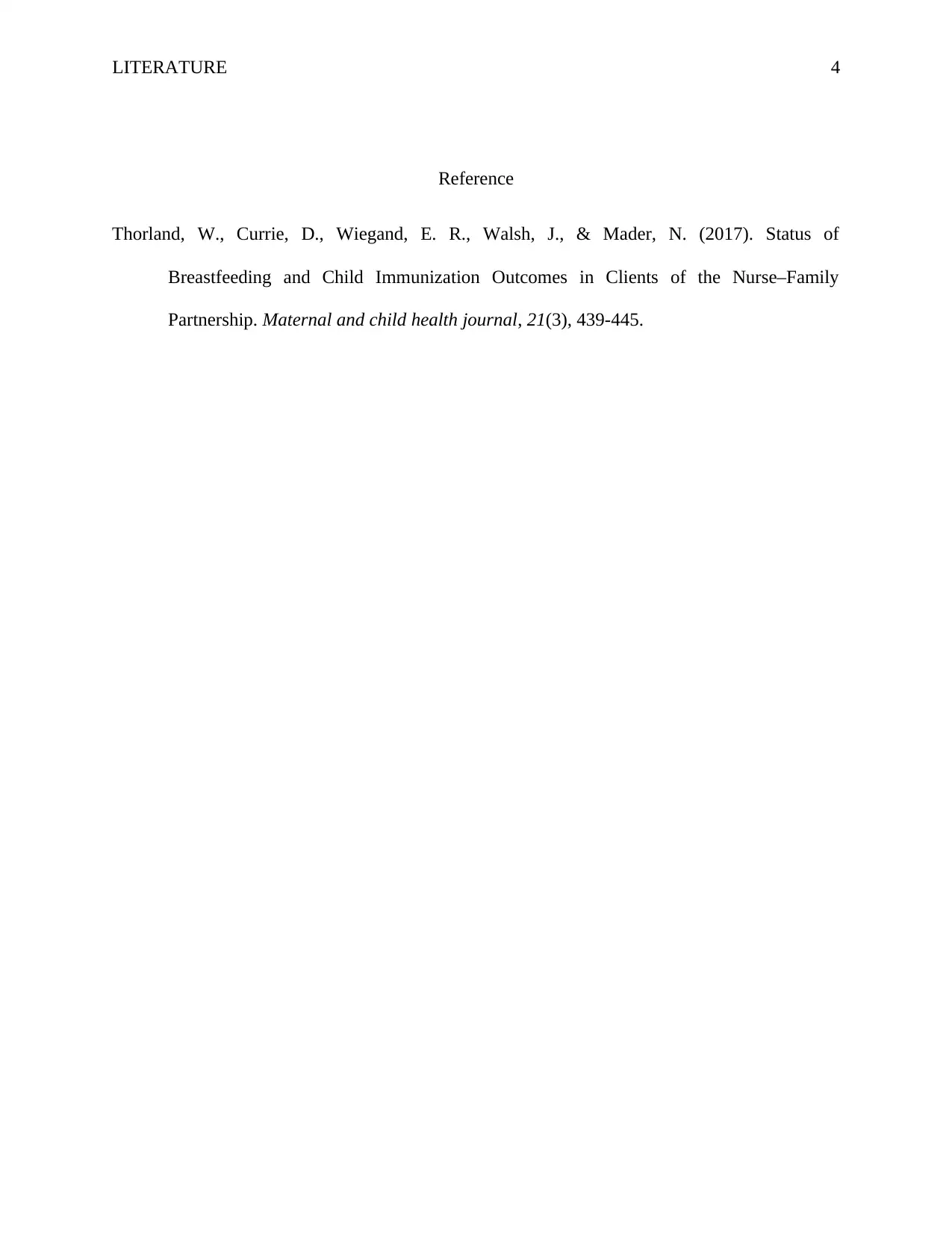Nurse-Family Partnership Program: Breastfeeding and Immunization
VerifiedAdded on 2022/10/09
|4
|386
|17
Report
AI Summary
This report analyzes the Nurse-Family Partnership (NFP) program, focusing on its impact on breastfeeding and immunization outcomes among low-income, first-time mothers. The study compares NFP client data with national surveys, revealing that NFP clients are more likely to ever breastfeed and maintain breastfeeding at 6 and 12 months, though less likely to exclusively breastfeed at 6 months. The report highlights the significance of the NFP program in providing care and support to mothers, promoting healthy early childhood development, and increasing awareness of immunization. The analysis also considers demographic factors, such as ethnicity, education, and marital status, and their influence on breastfeeding and immunization practices. Furthermore, the comparison of different data collection methods (longitudinal vs. cross-sectional) and the potential impact of secular trends are discussed.
1 out of 4





![[object Object]](/_next/static/media/star-bottom.7253800d.svg)